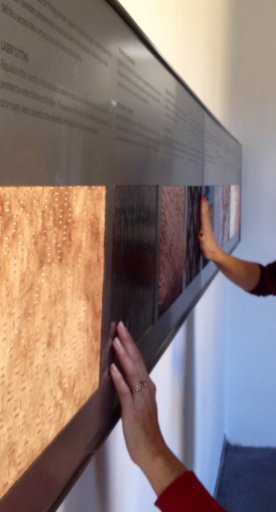

Palio competitions in Tuscany
From Siena to Pisa, a round-up of some of the best Palio races in Tuscany
Palio di Siena is the most popular historical horse race in Italy, what you may not know is that other Palio competitions are held in many Tuscan towns. The common name "Palio" which means "drape or standard" refers to the prize (a long, wide piece of precious cloth) which is awarded to the contrada. In fact, the meaning was broadened to include the race itself, so Palio has also become the name given to many historical competitions pitting the neighbourhoods of a town against each other.
-
1.Palio di Siena
-
2.Palio dei Rioni di Castiglion Fiorentino
-
3.Palio of Buti
-
4.Palio delle Contrade
-
5.Giostra dell'Orso (Joust of the Bear)
-
6.Palio dei Somari
-
7.Palio della Granocchia
-
8.Palio della Balestra
-
9.Palio di San Ranieri
Palio di Siena
The Palio di Siena is the most famous and ancient one and since 1633 it has been held every year on July 2 and on August 16.
The race consists of three laps of the piazza del Campo, on a track made with a mixture of sand and ‘tuff’. The winning jockey is the one whose horse, with or without jockey, completes the three laps first.
But more than a race, it’s a passion for the Sienese people and part of their lives, in fact each person in town belongs to a Contrada and participates all year round in the organization of the event.

Palio dei Rioni di Castiglion Fiorentino
The Palio dei Rioni runs every year on the third Sunday of June in Piazzale Garibaldi, in Castiglion Fiorentino (Arezzo). The day begins with the Mass at the Church of the Madonna delle Grazie del Rivaio, to whom the race is dedicated. After the liturgical celebration, horses and riders are blessed by the priest in front of the church.
In the afternoon starts the spectacular Corteggio Storico, a performance that includes the parade of the districts: the three groups of people, dressed according to medieval-Renaissance times and accompanied by their respective musicians and flag-wavers, gather in the Town Hall Square of Castiglion Fiorentino to parade across the main streets of the historic center waiting for the Palio that starts at 7 pm.






Palio of Buti
After Palio di Siena, Palio di Buti is the most ancient Palio in Tuscany.
It’s held in January along the main street of the village and has its roots in the seventeenth-century blessing of the stables and horses every January 17 for the San Antonio Abate feast.
But it’s not all about the horse race: the Palio lasts for about one week and offers a program full of shows and special dinners where it is possible to taste local specialties, such as the very popular Trippa alla butese (Tripe).
Palio delle Contrade
In May, Fucecchio celebrates their Palio delle Contrade: a reenactment of the Lancia Palio held in town in the XIII centuries.
The 12 contrade fight in a horse race to win the so-called ‘cencio’, a piece of fabric decorated by an artist for the event.
But the Palio delle Contrade is also famous for its costume parade, made of more than 1200 people dressed up with Medieval costumes.

Giostra dell'Orso (Joust of the Bear)
On July 25 Pistoia hosts the Giostra dell’Orso (Joust of the Bear) in the central piazza Duomo a modern twist on the ancient, traditional palio horse race that has been held there since the middle of the twelfth century.
Palio dei Somari
While horses compete in the city, donkeys run fast in the Val di Chiana.
The Palio dei Somari (a donkey race) in Torrita di Siena has been held since 1933 and is set in the first half of the fifteenth century.
It is celebrated annually on the Sunday after March 19 – St. Joseph day – or on March 19 (if it is a Sunday).
This feast is dedicated to St. Joseph because in Torrita di Siena woodworking has always been a widely-practiced activity. Since the party wanted to highlight the hard work and the simplicity of human labor, the donkey was chosen as the feast’s symbol.

Palio della Granocchia
If the race of donkeys seems something out of the ordinary you will be astonished with the Palio della Granocchia, a very particular frog race held in Paganico on the first Sunday of September.
During this competition a representative from each local district runs along the streets of the country with a wheelbarrow carrying three live frogs. The first to complete the course will be declared the winner of the Palio.
Obviously every time the frogs jump out of the wheelbarrow competitors must stop to pick them up until they get to the final line.
Palio della Balestra
But not all Palio races involve horses, donkeys (and frogs).
Some Palios are run by boat or involve other types of competition such as archery, jousting, crossbow shooting and other medieval sports.
In September, Sansepolcro recalls its Renaissance identity with the “Feste del Palio” (Games Festival) which culminates with the Crossbow Competition between Gubbio and Sansepolcro or Palio della Balestra.

Palio di San Ranieri
The city of Pisa celebrates its patron saint’s day, San Ranieri, on 17th June with a big regatta or Palio di San Ranieri on the river Arno.
The San Ranieri Palio race can trace its origins to Medieval times when similar competitions took place in Pisa to celebrate the Feast of the Assumption. The boats must race 1500m upstream from the Ferrovia Bridge to Palazzo Mediceo until they reach a boat anchored in the river on the finish line. The ‘montatore’ then must climb up the 10m high mast and grab the ‘paliotto’.
Our list could go on and on, but we prefer to give you this task. What other Palio races in Tuscany do you know?

















































































